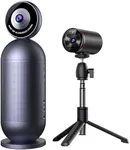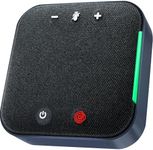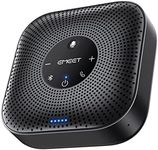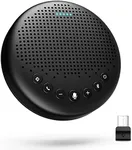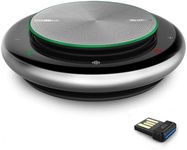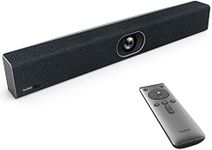We Use CookiesWe use cookies to enhance the security, performance,
functionality and for analytical and promotional activities. By continuing to browse this site you
are agreeing to our privacy policy
10 Best Conference Room Camera Systems 2025 in the United States
From leading brands and best sellers available on the web.How do we rank products for you?
Our technology thoroughly searches through the online shopping world, reviewing hundreds of sites. We then process and analyze this information, updating in real-time to bring you the latest top-rated products. This way, you always get the best and most current options available.

Buying Guide for the Best Conference Room Camera Systems
Choosing the right conference room camera system is crucial for ensuring clear communication and effective collaboration during meetings. The right system can make a significant difference in the quality of video and audio, making remote participants feel as if they are in the same room. When selecting a conference room camera system, consider the size of your room, the number of participants, and the type of meetings you typically hold. Here are some key specifications to consider and how to choose the best fit for your needs.ResolutionResolution refers to the clarity and detail of the video captured by the camera. Higher resolution means a clearer and more detailed image. Common resolutions include 720p (HD), 1080p (Full HD), and 4K (Ultra HD). For small to medium-sized rooms, 1080p is usually sufficient, providing a good balance between quality and bandwidth usage. For larger rooms or when you need the highest quality video, consider a 4K camera. Choose a resolution that matches the importance of video clarity in your meetings.
Field of View (FOV)Field of View (FOV) is the extent of the observable area that the camera can capture. A wider FOV means the camera can cover more of the room. FOV is typically measured in degrees. For small rooms, a FOV of 90-120 degrees is usually adequate. For larger rooms or when you need to capture more participants, look for a camera with a FOV of 120 degrees or more. Consider the layout of your room and the number of participants to determine the appropriate FOV.
Zoom CapabilityZoom capability allows the camera to focus on specific areas or participants in the room. There are two types of zoom: optical and digital. Optical zoom uses the camera's lens to magnify the image without losing quality, while digital zoom enlarges the image electronically, which can reduce quality. For larger rooms or when you need to focus on individual speakers, a camera with optical zoom is preferable. For smaller rooms, digital zoom may be sufficient. Choose based on the size of your room and the need for close-up shots.
Audio QualityAudio quality is just as important as video quality in a conference room camera system. Look for cameras with built-in microphones that offer noise reduction and echo cancellation features. Some systems also include external microphones for better sound capture. For small rooms, built-in microphones may be adequate. For larger rooms or when you need to ensure everyone is heard clearly, consider a system with external microphones. Assess the acoustics of your room and the number of participants to determine the best audio setup.
ConnectivityConnectivity options determine how the camera system integrates with your existing setup. Common connectivity options include USB, HDMI, and wireless connections. USB is typically used for plug-and-play setups with computers, while HDMI is used for direct connections to displays. Wireless options offer more flexibility in placement. Choose a connectivity option that matches your current equipment and setup. Consider ease of installation and compatibility with your existing devices.
Compatibility with Video Conferencing SoftwareEnsure that the camera system is compatible with the video conferencing software you use, such as Zoom, Microsoft Teams, or Google Meet. Compatibility ensures seamless integration and optimal performance. Most modern camera systems are designed to work with a variety of software, but it's always good to check. Choose a system that supports the software you use most frequently to avoid any compatibility issues.
Ease of UseEase of use is important for ensuring that everyone in the office can operate the camera system without difficulty. Look for systems with user-friendly interfaces, simple setup processes, and clear instructions. Some systems offer remote control or smartphone app integration for added convenience. Choose a system that matches the technical proficiency of your team and ensures smooth operation during meetings.
Most Popular Categories Right Now
